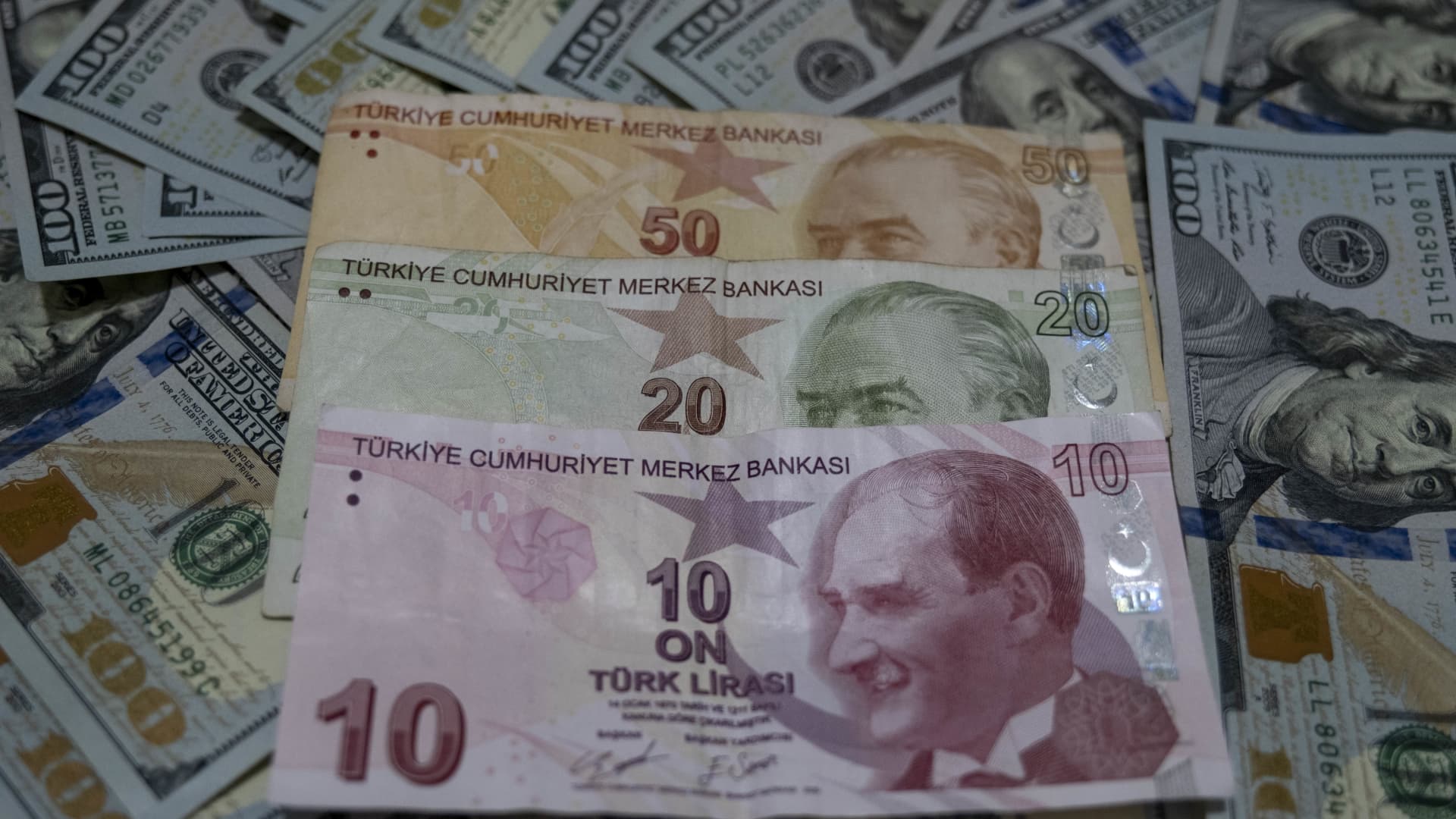
Turkish lira and U.S. dollar
Resul Kaboglu | NurPhoto via Getty Images
Turkey’s central bank on Thursday cut its key interest rate by three points points to 43%, returning down the path of monetary easing.
The step marked the first rate reduction since April, when the bank hiked rates to 46% in the wake of the controversial arrest of Istanbul Mayor Ekrem Imamoglu, which sent the Turkish lira tumbling.
The move also suggests confidence in the monetary policy committee’s work toward tackling inflation, which sat at 35.05% in June but has been steadily decreasing.
“The tight monetary policy stance, which will be maintained until price stability is achieved, will support the disinflation process through moderation in domestic demand, real appreciation in Turkish lira, and improvement in inflation expectations,” the central bank said in a statement accompanying the decision.
The central bank had surprised markets on April 17 when it raised its one-week repurchase rate from 42.5% to 46% in a 350-basis-point hike that ended the easing cycle it had begun in December of last year.
For this week’s decision, markets had priced in a 250-basis-point cut, so the reduction of 300 basis points surprised many analysts — some of whom suggest easing will likely slow down from here.
“The decision by the Turkish central bank to cut its one-week repo rate by 300bp today, to 43.00%, was a slight dovish surprise, but the accompanying communications remained hawkish,” Nicholas Farr, an emerging Europe economist at Capital Economics, wrote in a report following the decision.
“We expect the pace of the easing cycle to slow down from here,” Farr wrote, forecasting the bank’s key interest rate to close the year at 37%.
Timothy Ash, senior emerging markets strategist at BlueBay Asset Management, described the move as too dovish and suggestive of a lack of independence by the monetary policy committee.
“Disappointing move by the CBRT,” Ash wrote in an email note, referencing the central bank by its acronym.
“The market expected the MPC (monetary policy committee) to show its independence and boost its credibility by doing less than what was priced in … The CBRT had a chance to get ahead of the curve in terms of anchoring inflation expectations lower, and it fluffed its lines.”
Still, Ash said that with inflation easing relative to previous months, and rates still high, “policy is right.”
“But” he asked, “is it tight enough to get to the CBRT’s end year forecast of 28% [inflation]? Not sure in my mind.”




